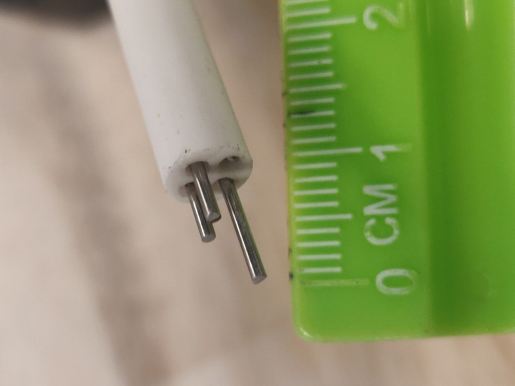Photo

Caption
Proposed electrochemical sensor to detect the salt composition during operation, with a thermocouple, which creates an electrical signal that can be used to measure temperature. Photo courtesy of National Renewable Energy Laboratory.
Photo

Caption
Thermally purified chloride salt. The pink color occurs after thermal purification, potentially due to dehydration and interaction of salt with the purification container. Photo courtesy of National Renewable Energy Laboratory.
Photo

Caption
Chemically purified chloride salt. The pink color after thermal purification disappears because elemental magnesium is added to help purify the salt purification agent. Then, sodium chloride is added for optimal heat capacity, density, and viscosity measurement by NREL and other research partners. Photo courtesy of National Renewable Energy Laboratory.
Photo

Caption
Graphic courtesy of National Renewable Energy Laboratory.
Photo

Caption
Proposed electrochemical sensor to detect the salt composition during operation, with a thermocouple, which creates an electrical signal that can be used to measure temperature. Photo courtesy of National Renewable Energy Laboratory.
Proposed electrochemical sensor to detect the salt composition during operation, with a thermocouple, which creates an electrical signal that can be used to measure temperature. Photo courtesy of National Renewable Energy Laboratory.

